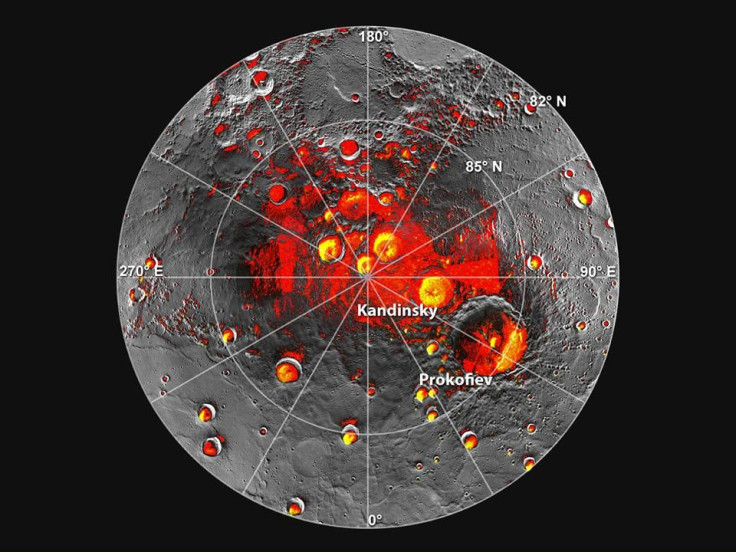Researchers Confirm the Presence of Water on Mercury's Surface

The United States' National Aeronautics and Space Administration, or NASA, has confirmed that Mercury has water on or near its surface.
It may seem that Mercury would be the least likely planet to have water on its surface, since its close proximity to the sun means that its surface is devastatingly hot. However, Mercury's rotational axis tilts at an angle of almost zero, meaning that there are regions of the poles that never see sunlight. That is where Mercury's water ice lies, according to three different studies, all published in the journal Science.
According to NASA, "three independent lines of evidence support this conclusion: the first measurements of excess hydrogen at Mercury's north pole with MESSENGER's Neutron Spectrometer, the first measurements of the reflectance of Mercury's polar deposits at near-infrared wavelengths with the Mercury Laser Altimeter (MLA), and the first detailed models of the surface and near-surface temperatures of Mercury's north polar regions that utilize the actual topography of Mercury's surface measured by the MLA."
Researchers first began to suspect the presence of water ice on Mercury in 1991. That year, the Arecibo telescope in Puerto Rico noticed spots on Mercury's surface that reflected radar in the same way that water ice would have.
The arrival of the Messenger spacecraft confirmed that. The analysis of Messenger's findings, which measured the amount of hydrogen in the area, indicates that water ice is at the surface at the coldest areas of the planet's poles and is buried underneath the surface in areas that would be too warm for ice to be stable.
Another paper came to the same conclusion. Led by David Neumann from the NASA Goddard Space Flight Center, researchers shot thousands of lasers at Mercury in order to assess the planet's topography, or the appearance of its surface. Their efforts similarly found ice covered by a thin insulating layer.
In the third study, led by David Paige from the University of California, Los Angeles, researchers theorize that the insulating layer came from organic materials on asteroids and comets, which also likely provided the material for the water ice. The organic material, they say, was likely darkened even further by radiation.
Sean Soloman, from Columbia University's Lamont-Doherty Earth Observatory, says that the radiation in the insulating layer adds a new mystery to the explanation. "Do the dark materials in the polar deposits consist mostly of organic compounds?" he wonders. "What kind of chemical reactions has that material experienced? Are there any regions on or within Mercury that might have both liquid water and organic compounds? Only with the continued exploration of Mercury can we hope to make progress on these new questions."
Published by Medicaldaily.com



























